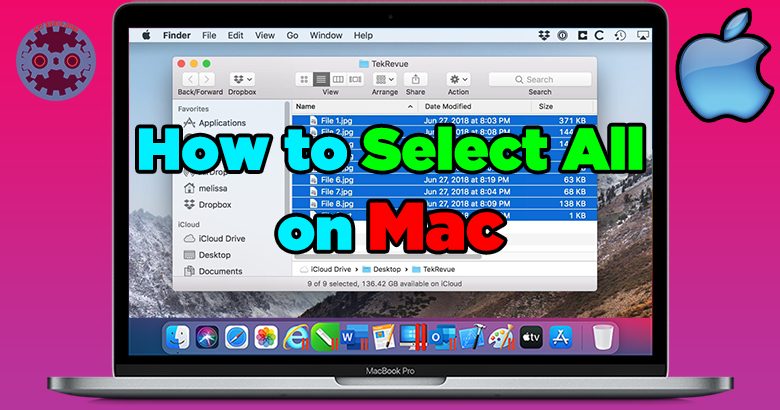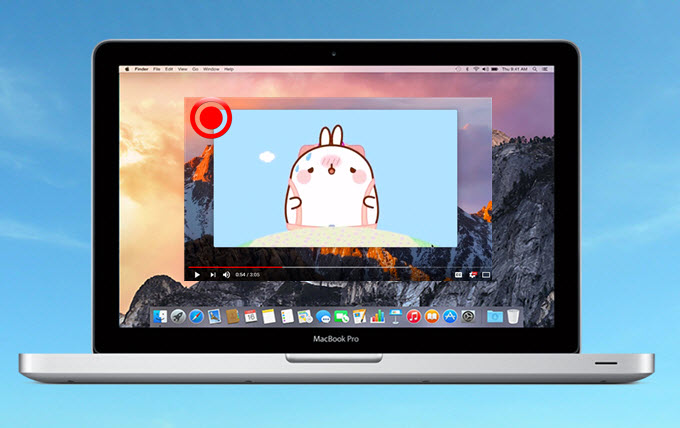Ever wondered how to connect a Dell monitor to your MacBook Pro? Well, the solution is simpler than you might think. In this article, we’ll guide you through the step-by-step process of connecting your Dell monitor to your MacBook Pro and have you up and running in no time. Whether you need a larger display for work, gaming, or simply to enhance your overall viewing experience, we’ve got you covered. So, let’s dive in and explore how to connect your Dell monitor to your MacBook Pro effortlessly.
Table of Contents
- 1 How to Connect a Dell Monitor to a MacBook Pro
- 2 Frequently Asked Questions
- 2.1 How do I connect a Dell monitor to my MacBook Pro?
- 2.2 What cables do I need to connect a Dell monitor to my MacBook Pro?
- 2.3 How do I set up dual monitors with my MacBook Pro and Dell monitor?
- 2.4 Why is my Dell monitor not displaying anything when connected to my MacBook Pro?
- 2.5 Can I use a Dell monitor with a MacBook Pro that has USB-C ports?
- 3 Final Thoughts
How to Connect a Dell Monitor to a MacBook Pro
Introduction
In today’s digital age, having a second monitor can greatly enhance your productivity and multitasking abilities. If you own a Dell monitor and a MacBook Pro, you might be wondering how to connect the two and enjoy a larger screen experience. Good news! Connecting a Dell monitor to a MacBook Pro is a relatively straightforward process that can be completed in just a few simple steps. In this article, we will guide you through the process, ensuring that you can seamlessly connect your Dell monitor to your MacBook Pro and enjoy the benefits of a dual-screen setup.
Gather the Necessary Equipment
Before diving into the connection process, it’s essential to make sure you have all the necessary equipment. Here are the items you will need:
- A compatible Dell monitor
- A MacBook Pro
- An appropriate video cable or adapter
Choosing the Right Video Cable or Adapter
When it comes to connecting a Dell monitor to a MacBook Pro, the type of video cable or adapter you use depends on the ports available on your devices. Here are the most common options:
1. HDMI Cable: If both your Dell monitor and MacBook Pro have HDMI ports, using a standard HDMI cable is the simplest solution. HDMI cables support both audio and video transmission.
2. DisplayPort Cable: If your Dell monitor and MacBook Pro have DisplayPort connectors, using a DisplayPort cable is a reliable option. DisplayPort cables also support audio and video transmission.
3. USB-C to HDMI Adapter: If your Dell monitor only has HDMI ports and your MacBook Pro features USB-C ports, you’ll need a USB-C to HDMI adapter. This adapter allows you to connect your MacBook Pro to the Dell monitor using an HDMI cable.
4. USB-C to DisplayPort Adapter: If your Dell monitor only has DisplayPort connectors and your MacBook Pro has USB-C ports, a USB-C to DisplayPort adapter is necessary. This adapter enables you to connect your MacBook Pro to the Dell monitor using a DisplayPort cable.
Determining the Ports on Your Dell Monitor and MacBook Pro
To identify the available ports on your Dell monitor and MacBook Pro, refer to their respective user manuals or the specifications listed on the manufacturer’s website. Once you determine the ports, you can choose the appropriate video cable or adapter that will facilitate the connection between the two devices.
Connecting Your Dell Monitor to Your MacBook Pro
Now that you have the necessary equipment and have identified the ports on your devices, it’s time to connect your Dell monitor to your MacBook Pro. Follow these step-by-step instructions:
- Switch off both your Dell monitor and MacBook Pro.
- Connect one end of the video cable or adapter to the appropriate port on your Dell monitor.
- Connect the other end of the cable or adapter to the corresponding port on your MacBook Pro.
- Power on your Dell monitor and MacBook Pro.
- Your MacBook Pro should automatically detect the Dell monitor and mirror its display. If it doesn’t, you may need to adjust your display settings manually.
- To adjust the display settings on your MacBook Pro, go to the Apple menu, select “System Preferences,” and then click on “Displays.”
- In the Displays preferences, you can configure various settings such as resolution, brightness, and arrangement of the dual screens.
- Once you’ve adjusted the settings to your liking, you’re all set! Enjoy the expanded workspace and increased productivity of your dual-screen setup.
Troubleshooting
While connecting a Dell monitor to a MacBook Pro is usually a straightforward process, you may encounter some challenges along the way. Here are a few troubleshooting tips to help you overcome any potential issues:
Check the Video Cable Connections
Ensure that all connections between your Dell monitor, video cable, and MacBook Pro are secure. Sometimes a loose connection can prevent the display from working correctly.
Restart Your MacBook Pro
If your MacBook Pro doesn’t detect the Dell monitor, try restarting your computer. This simple step can often resolve software-related issues and establish the connection.
Update Your MacBook Pro’s Software
Outdated software on your MacBook Pro can sometimes cause compatibility issues with external monitors. Make sure your MacBook Pro’s operating system is up to date by going to the Apple menu, selecting “System Preferences,” and clicking on “Software Update.”
Try a Different Video Cable or Adapter
If you’re experiencing persistent connectivity problems, it’s worth trying a different video cable or adapter. Sometimes faulty or incompatible equipment can hinder the connection between your Dell monitor and MacBook Pro.
Consult the User Manuals
If none of the above solutions work, consult the user manuals of both your Dell monitor and MacBook Pro for specific troubleshooting advice. The user manuals usually provide detailed instructions on how to troubleshoot common issues and ensure a successful connection.
Connecting a Dell monitor to a MacBook Pro allows you to enjoy the benefits of a dual-screen setup, significantly enhancing your productivity and multitasking capabilities. By following the steps outlined in this article, you can effortlessly connect your Dell monitor to your MacBook Pro and create an extended workspace. Remember to gather the necessary equipment, choose the appropriate video cable or adapter, and carefully follow the connection process. In case of any difficulties, don’t hesitate to refer to the troubleshooting section and consult the user manuals. With a properly connected Dell monitor, your MacBook Pro will become even more powerful and versatile. Happy computing!
How to Connect a Macbook Pro to a Monitor – Full Tutorial with All Options
Frequently Asked Questions
How do I connect a Dell monitor to my MacBook Pro?
To connect a Dell monitor to your MacBook Pro, you can follow these steps:
What cables do I need to connect a Dell monitor to my MacBook Pro?
Depending on the ports available on your Dell monitor and MacBook Pro, you may need one of the following cables:
- If your Dell monitor has an HDMI port and your MacBook Pro has a Thunderbolt 3 (USB-C) port, you can use a USB-C to HDMI cable.
- If your Dell monitor has a DisplayPort and your MacBook Pro has a Thunderbolt 3 (USB-C) port, you can use a USB-C to DisplayPort cable.
- If your Dell monitor has a VGA port and your MacBook Pro has a Thunderbolt 3 (USB-C) port, you can use a USB-C to VGA adapter or cable.
How do I set up dual monitors with my MacBook Pro and Dell monitor?
To set up dual monitors with your MacBook Pro and Dell monitor, you can follow these steps:
- Connect your first Dell monitor to your MacBook Pro using the appropriate cable.
- Go to the Apple menu, select “System Preferences,” and then click on “Displays.”
- In the Displays preferences, go to the “Arrangement” tab.
- Enable “Mirror Displays” if you want the same content on both monitors, or uncheck it to extend your MacBook Pro’s desktop to the Dell monitor.
- Arrange the position of the monitors by dragging the white menu bar in the graphical representation.
Why is my Dell monitor not displaying anything when connected to my MacBook Pro?
If your Dell monitor is not displaying anything when connected to your MacBook Pro, you can try the following troubleshooting steps:
- Ensure that the cable is securely connected to both the Dell monitor and your MacBook Pro.
- Check if the Dell monitor is powered on and set to the correct input source.
- Restart your MacBook Pro and see if the monitor is detected.
- If using an adapter, try using a different adapter or cable.
- Update your MacBook Pro’s software by going to the Apple menu, selecting “System Preferences,” and clicking on “Software Update.”
Can I use a Dell monitor with a MacBook Pro that has USB-C ports?
Yes, you can use a Dell monitor with a MacBook Pro that has USB-C ports. You will need the appropriate cable or adapter to connect the two devices. Refer to the previous question for the recommended cables based on the available ports.
Final Thoughts
In conclusion, connecting a Dell monitor to a MacBook Pro is a straightforward process that can greatly enhance your productivity and improve your viewing experience. By using the appropriate cables and adapters, such as a Mini DisplayPort to DisplayPort cable or a USB-C to DisplayPort adapter, you can seamlessly extend your display or mirror your MacBook Pro screen on the Dell monitor. With the ability to easily connect and switch between devices, enjoying a larger screen and increased workspace has never been easier. So, if you’re looking to connect your Dell monitor to your MacBook Pro, simply follow these steps and enjoy the benefits of a dual-screen setup.

